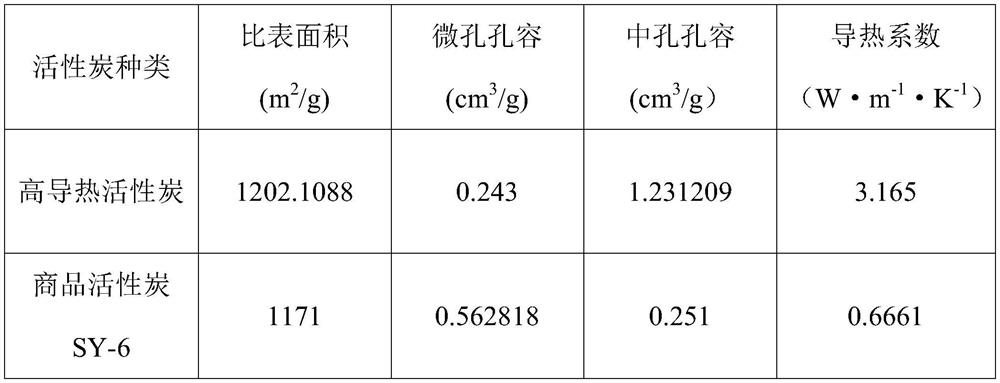Preparation of High Thermal Conductivity Activated Carbon as a Supported Catalyst Suitable for Adsorption and Degradation of Dioxins
A catalyst-loaded, adsorption-degradation technology, which is applied in the field of preparation of high thermal conductivity activated carbon, can solve the problems of ordinary activated carbon adsorption efficiency decrease, activated carbon regeneration efficiency, secondary pollution, etc., achieve rich mesopores, avoid secondary pollution, and improve regeneration efficiency effect
- Summary
- Abstract
- Description
- Claims
- Application Information
AI Technical Summary
Problems solved by technology
Method used
Image
Examples
Embodiment Construction
[0014] As follows, the application scheme is further described:
[0015] The preparation of a high thermal conductivity activated carbon suitable for adsorption and degradation of dioxin-loaded catalyst comprises the following steps:
[0016] S1. Preparation of high thermal conductivity activated carbon
[0017] Clean coconut shells and walnut shells, dry them, crush them with a pulverizer, and sieve them to obtain walnut shell powder, seal them for later use; then weigh 100g of coconut shells or walnut shell powder and 1000mL of ZnCl with a concentration of 0.3g / ml 2 - The HCl solution is thoroughly mixed and evenly added, and 30g of carbon-containing thermal conductive material (silicon carbide) is added, and ultrasonically ultrasonicated for 30 minutes, so that the thermal conductive material is better dispersed in the coconut shell or walnut shell powder. Then stir the mixture at 60-80°C for 3 hours, and dry the mixture after the reaction is over; then put the dried react...
PUM
 Login to View More
Login to View More Abstract
Description
Claims
Application Information
 Login to View More
Login to View More - R&D
- Intellectual Property
- Life Sciences
- Materials
- Tech Scout
- Unparalleled Data Quality
- Higher Quality Content
- 60% Fewer Hallucinations
Browse by: Latest US Patents, China's latest patents, Technical Efficacy Thesaurus, Application Domain, Technology Topic, Popular Technical Reports.
© 2025 PatSnap. All rights reserved.Legal|Privacy policy|Modern Slavery Act Transparency Statement|Sitemap|About US| Contact US: help@patsnap.com

